- You are here:
- Home »
- Oven Recipes
- » Kale Oven Recipe: A Nourishing Delight
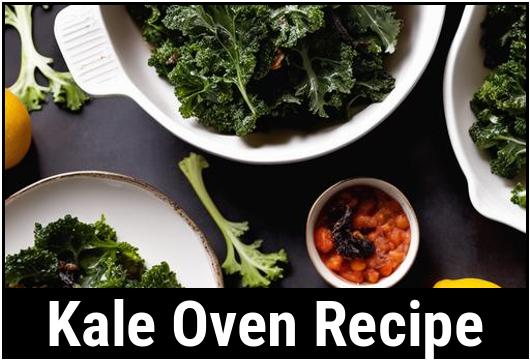
Kale Oven Recipe: A Nourishing Delight
Kale, a vibrant and nutrient-packed leafy green vegetable, has gained immense popularity owing to its exceptional health benefits and culinary versatility. In this comprehensive article, you will dive into the world of kale oven recipes, exploring its food science, culinary details, selection, cleaning, preparation, cooking tips, variations, doneness checks, and even the dreaded overcooking and undercooking. Whether you’re a seasoned chef or a novice in the kitchen, this article will guide you towards creating a delicious and nutrient-rich kale dish that will leave you craving for more.
Understanding the Science Behind Kale
Before we dive into the details of kale oven recipes, let’s take a moment to understand the nutritional powerhouse that kale truly is. Kale belongs to the cruciferous vegetable family, which includes broccoli, Brussels sprouts, and cabbage. It is packed with vitamins A, C, and K, as well as important minerals like calcium, iron, and potassium. Additionally, kale contains high levels of antioxidants and fiber, making it an ideal addition to any well-balanced diet.
When kale is exposed to heat during oven cooking, its cellular structure undergoes changes that enhance its flavors and textures. Understanding these transformations will provide crucial insights into creating a perfect kale oven recipe.
Selecting and Cleaning Kale
Choosing the right kale is essential to achieving a delicious outcome. Look for vibrant, dark green leaves that are crisp and firm to the touch. Avoid any kale with wilted or yellowed leaves, as they may not deliver the optimal taste and texture when cooked.
Once you’ve selected your kale, it’s time to give it a thorough cleaning. Begin by rinsing the leaves under cold water to remove any dirt or grit. Afterward, gently pat them dry, or use a salad spinner for more efficient drying.
Preparing Kale for Oven Cooking
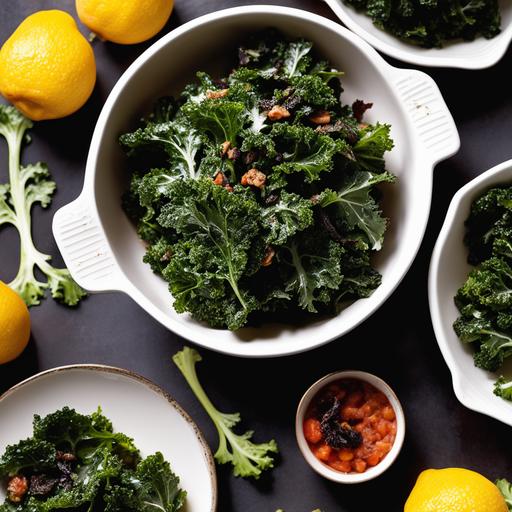
Properly preparing kale before it goes into the oven will help maximize its flavors and tenderness. Start by removing the tough stems from each leaf. Hold the kale leaf by its stem with one hand, and slide your other hand along the stem, stripping the leaf away. Discard the stems or save them for another use, such as adding them to vegetable broth or smoothies.
Once you’ve removed the stems, consider how you would like to incorporate kale into your dish. You can chop it into bite-sized pieces, tear it into rustic chunks, or keep the leaves whole for a more dramatic presentation. The key is to ensure that all the kale pieces are relatively similar in size, allowing for even cooking.
Essential Tips for Cooking Kale in the Oven
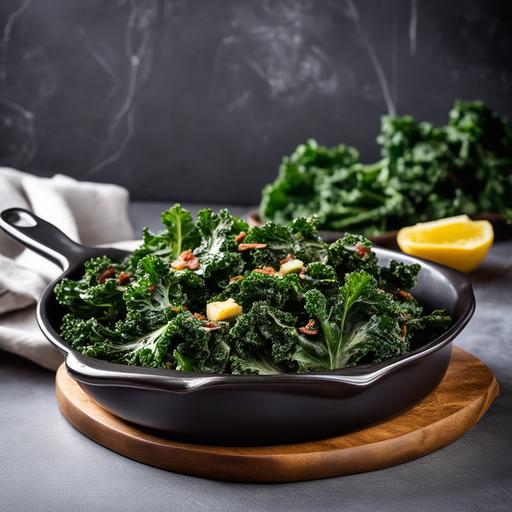
To achieve exceptional results with your kale oven recipe, here are some essential tips to keep in mind:
-
Preheating the Oven: Ensure that your oven is preheated before putting the kale in. This will help optimize cooking time and ensure even cooking throughout.
-
Dry Well: Excess moisture can hinder the crisping process, resulting in less desirable texture. Make sure your kale is completely dry before proceeding with coating or seasoning.
-
Coating Options: While kale is delicious on its own, adding a light coating of oil or a flavorful marinade can enhance its taste and texture. Consider using olive oil, sesame oil, or a tangy vinaigrette as options for coating your kale. Be mindful of the quantity, aiming for a thin and even coating.
-
Seasoning Creatively: Kale provides a fantastic canvas for various seasonings. Experiment with spices like smoked paprika, garlic powder, chili flakes, or even a sprinkle of grated Parmesan cheese. Find the flavor combinations that tickle your taste buds and create an unforgettable dish.
Achieving the Perfect Doneness
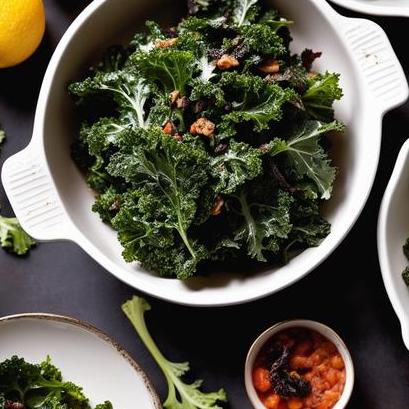
Determining the ideal doneness of kale is crucial to preserving its vibrant green color and achieving the desired texture. Overcooking can lead to a bitter taste and a mushy consistency, while undercooking may result in chewy leaves that are challenging to enjoy.
When cooking kale in the oven, keep a keen eye on its progress. The leaves should become slightly crispy, with edges beautifully browned. You want to strike a balance between a tender center and a delightfully crunchy exterior. To ensure you reach this balance consistently, follow the suggested cooking times in the accompanying recipe.
Delicious Kale Oven Recipe
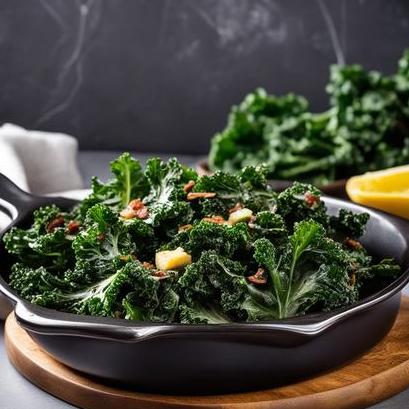
Roasted Kale Chips
Cooking time: 15-20 minutes
Ingredients:
-
1 bunch of fresh kale (approximately 8 cups)
-
2 tablespoons of olive oil
-
1 teaspoon of sea salt
-
Optional: additional seasonings of your choice (e.g., garlic powder, paprika)
Instructions:
-
Preheat the oven to 375°F (190°C).
-
Thoroughly rinse the kale under cold water and pat dry with a kitchen towel or use a salad spinner.
-
Remove the tough stems from each kale leaf by holding the stem with one hand and stripping the leaf away with your other hand.
-
Tear the kale leaves into bite-sized pieces or desired size.
-
In a large mixing bowl, combine the torn kale leaves, olive oil, sea salt, and any additional seasonings you desire. Toss gently, ensuring an even coating.
-
Spread the kale leaves in a single layer on a baking sheet lined with parchment paper.
-
Place the baking sheet in the preheated oven and bake for 10-12 minutes, or until the edges of the kale chips become golden brown and crispy.
-
Keep a close eye on the kale chips as they cook, as they can quickly go from crispy to burnt. Rotate the baking sheet if necessary for even cooking.
-
Once the kale chips are done, remove them from the oven and allow them to cool for a few minutes before enjoying their delectable crunchiness.
Exploring Variations and Pairings
While the roasted kale chips recipe mentioned above is a classic and crowd-pleasing option, there are numerous variations and pairings to explore. Here are some ideas to spark your creativity:
-
Kale and Parmesan Crisps: Sprinkle grated Parmesan cheese over kale leaves before baking to create a cheesy delight.
-
Spiced Kale Medley: Combine torn kale leaves with other vegetables like bell peppers, onions, and cherry tomatoes. Season with spices like cumin, coriander, and turmeric for a flavorful oven-roasted vegetable medley.
-
Kale Caesar Salad: Crisp up kale leaves in the oven, then toss them with a homemade or store-bought Caesar dressing. Top with croutons and grated Parmesan cheese for a unique twist on the classic Caesar salad.
-
Kale and Quinoa Stuffed Bell Peppers: Roast kale leaves in the oven and use them as a filling along with cooked quinoa for stuffed bell peppers. Bake until the peppers are tender, and the filling is heated through.
Avoiding Common Pitfalls: Overcooking and Undercooking
Overcooking and undercooking are common pitfalls to be mindful of when preparing kale in the oven. Here are some signs to watch out for and tips to avoid these unwanted outcomes:
-
Overcooking: If kale turns excessively dark or starts to emit a burnt smell, it is a sign of overcooking. To prevent this, closely monitor the kale during the baking process, and adhere to the recommended cooking times. Adjust the oven temperature if needed and always aim for a crispy texture without burning.
-
Undercooking: Undercooked kale may taste raw and overly chewy, making it challenging to enjoy. Ensure you bake the kale for the recommended duration, checking for a slight crispiness and a vibrant green color. If the kale leaves still seem tough and unappetizing after the suggested cooking time, continue baking in short intervals while keeping a close eye on them.
By paying attention to these details and closely following the recipe instructions, you can proudly create delectable kale oven dishes time and time again.
Conclusion
Through this comprehensive guide, you’ve delved into the world of kale oven recipes, learning about the food science behind kale, selecting and cleaning the vegetable, preparing it for oven cooking, and acquiring essential tips for achieving the perfect doneness. Armed with this knowledge, you’re ready to embark on a culinary adventure, exploring variations, pairing options, and creating mouthwatering kale dishes that will impress even the most discerning palates.
Remember, be creative, trust your taste buds, and experiment with different flavors and cooking techniques. With kale’s incredible nutritional profile and your newfound knowledge, your kitchen will transform into a hub of delicious, healthy, and kale-inspired dishes. So put on your apron, preheat the oven, and let the magic of kale unfold on your taste buds!
Sources
FAQS On Kale Oven Recipe
What Is The Best Way To Prepare Kale In The Oven?
The best way to prepare kale in the oven is to preheat the oven to 350°F, then wash and thoroughly dry the kale leaves. Tear the leaves into bite-sized pieces, removing the tough stems. Toss the kale with olive oil, salt, and any desired seasonings, then spread it out on a baking sheet in a single layer. Bake for 10-15 minutes, or until the edges are crispy.
Can I Use Any Type Of Kale For An Oven Recipe?
While any type of kale can be used for an oven recipe, Lacinato kale, also known as dinosaur kale, is often preferred for its tender leaves and slightly sweeter flavor. Curly kale can also be used, but may require a slightly longer cooking time to crisp up.
What Seasonings Pair Well With Oven-baked Kale?
Oven-baked kale pairs well with a variety of seasonings, such as garlic powder, onion powder, smoked paprika, or chili flakes for a spicy kick. Parmesan cheese can also be sprinkled on the kale before baking for a flavorful, crispy topping.
How Can I Prevent Kale From Becoming Soggy In The Oven?
To prevent kale from becoming soggy in the oven, it’s important to thoroughly dry the leaves after washing to remove any excess moisture. Additionally, make sure to spread the kale out on the baking sheet in a single layer to ensure even cooking and crispiness.
What Are Some Creative Ways To Use Oven-baked Kale?
Oven-baked kale can be used as a topping for salads, soups, or sandwiches, or enjoyed on its own as a crunchy, healthy snack. It can also be crumbled over pasta dishes or used as a flavorful addition to grain bowls.


